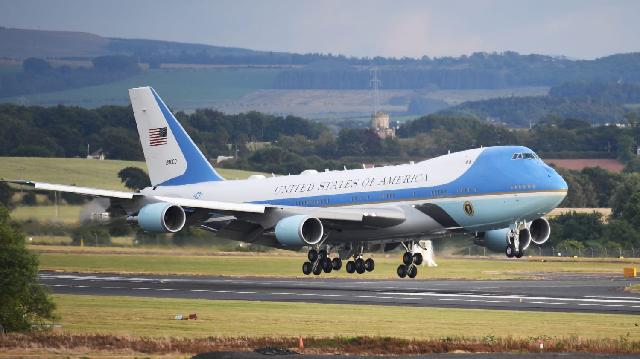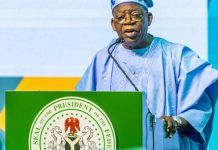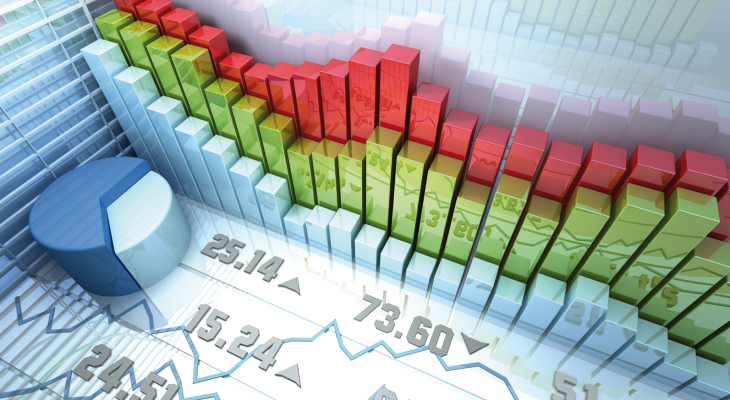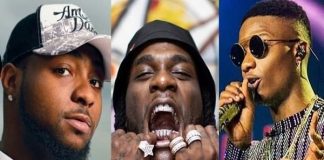The current look of Air Force One is a true design classic. It dates back to 1962, and is the result of collaboration between JFK and Raymond Loewy, one of the fathers of industrial design.
But after more than five decades and eleven administrations, the elegant livery is getting a makeover.
President Trump said he doesn’t like the current aesthetics and intends to replace the blue hue. According to the media platform Axios, the President would like to make it look “more American.”
Regardless of Trump’s vision, it’s highly likely that the next presidential plane will look different as the current aircraft approach the end of their lifespan and emerging technology makes a replacement necessary,
More than One
Air Force One is technically not the name of a plane, but rather the callsign used by air traffic controllers to refer to whatever aircraft is carrying the President. Popularly, though, it is the name given to the presidential plane, a modified Boeing model 747-200B, which under Air Force designation is known as a VC-25A. There are two of them, so that at least one is ready at all times. They’re mostly identical except for their tail codes: SAM 28000 and SAM 29000 (SAM stands for Special Air Mission).
The callsign was adopted in 1953, after the plane carrying President Eisenhower and a commercial airliner, both with the tail code 8610, dangerously entered the same airspace.
The president’s aircraft at that time was a prop plane — a Lockheed C-121 Constellations nicknamed Columbine II — but it was again Eisenhower who flew on the first presidential jet, a modified Boeing 707 that entered service in 1959.
At that time, the planes were still full-fledged military aircraft and they sported a red, orange and black color scheme designed by the Air Force.
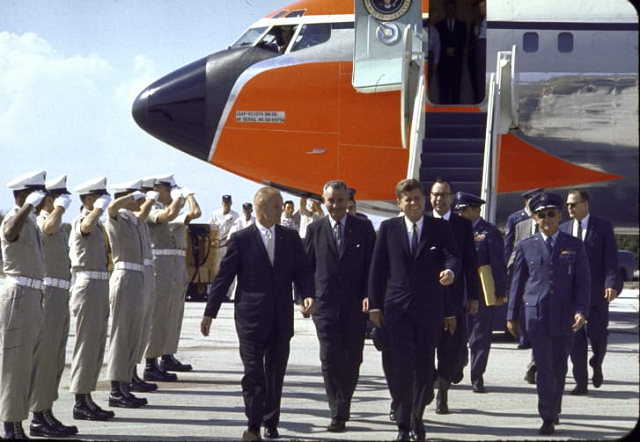
The radical redesign that still survives today debuted on a brand new Boeing 707 (or C-137 Stratoliner as the Air Force called it) with tail code SAM 26000. It entered service in October of 1962.
“It evolved from an interesting interaction between JFK, Jackie Kennedy and Raymond Loewy, who was a famed industrial designer,” said Air Force One historian and former Smithsonian curator Von Hardesty in a phone interview.
French-born Loewy was among the most successful designers of his time, having created such icons as the Lucky Strike pack, Coca-Cola vending machines and the Greyhound buses, and popular logos for TWA, Exxon and Shell. “
He criticized the looks of the plane that had been delegated for presidential use, which had a garish orange nose and looked too much like a military plane.
He wanted something that would reflect the presidency and he thought this was an opportunity to fashion a really compelling design, which arguably he did.”
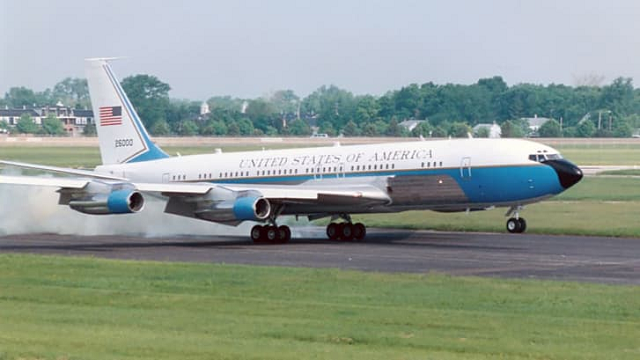
‘Seafoam’ blue
Although one of Loewy’s initial sketches included some red, the final design did not. The dominant blue paint job came at JFK’s request.
“The seafoam blue and silver on the lower half was a stroke of genius to make the plane seem more horizontal and sleek,” said designer and former president of the American Institute of Graphic Arts Sean Adams in an email interview.
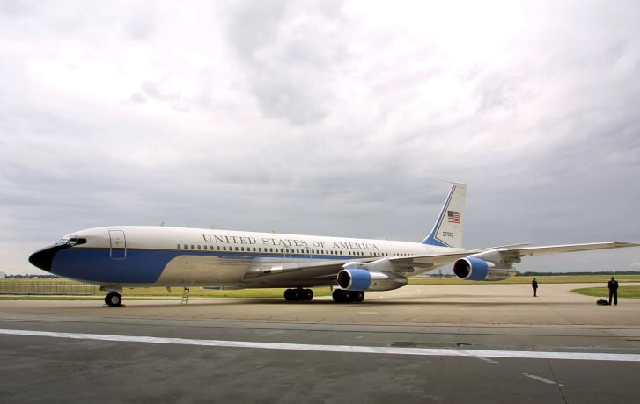
“The seafoam is a surprising choice, but an elegant solution to the issue of making the plane sophisticated and modern, stepping away from the military look of Eisenhower’s Air Force One.
The plane spoke to an optimism, youth, and fresh approach that was perfect for the Kennedy administration,” he added.
The typeface for the legend “United States of America” is Caslon, very similar to the one used in the Declaration of Independence.
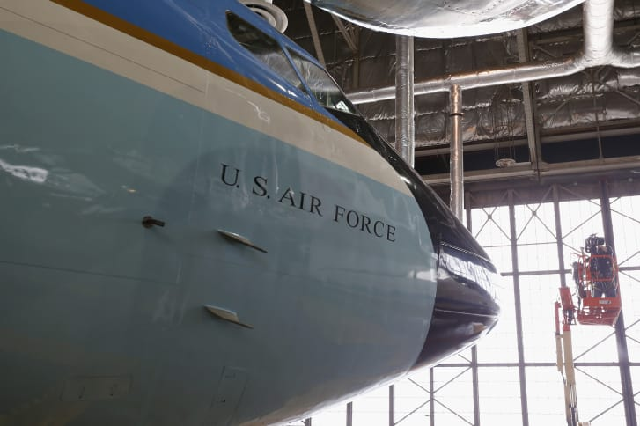
The plane remained in service until the Clinton administration, but it was replaced as the main presidential aircraft by another 707 in 1972. That particular airplane, tail code SAM 27000, was retired in 2001 after having served seven presidents: Richard Nixon, Gerald Ford, Jimmy Carter, Ronald Reagan, George H. W. Bush, Bill Clinton, and George W. Bush.
Adams isn’t thrilled at the prospect of a revamp. “Air Force One is an identity with equity. It works,” he said. “Why make it look like a Walmart in the sky?”
Red, white and blue
During the Reagan administration work began on a new generation of Air Force Ones, with First Lady Nancy curating the interior design.
But due to a number of delays, the planes only entered service under George H. W. Bush in 1990. While almost every system was upgraded, the paint job was preserved. “A good design brings with it a certain inertia and you really need to have a compelling reason to change it.
By that point, it was so widely accepted and universally applauded that they just wanted the new 747 aircraft to have it too,” said Harvesty.
These are the planes that are still in use today, and the Loewy design has undergone only minor amendments, due to the larger size of the 747s.
“It’s faithful to the Raymond Loewy design as much as possible on a behemoth of a plane. It’s hard to make a 747 look light and sophisticated, but the color, shapes, and typography do a great job. It maintains all the positives from the 1962 version.
I’m especially glad that the 1980s didn’t creep in on the design with mauve and almond,” said Adams.
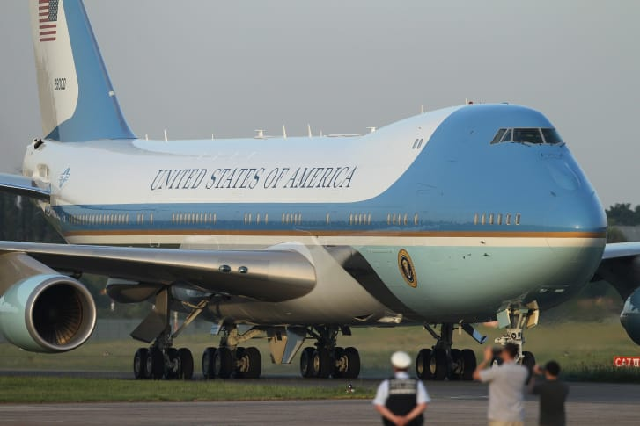
Earlier this month, Boeing confirmed it received a $3.9 billion contract for two new presidential planes. They will still be 747s — albeit a newer version, the 747-8 — even though the aging plane is being phased out by commercial airlines.
“The reason is that the Secret Service requires, in the interest of safety, that the President should fly only on four-engine aircraft.
The 747 also provides more space for the President, his key staff, and the complex communications equipment required for the president to be in touch with anyone in the world at all times,” said aviation expert Gene Heisman in an email interview.
But most importantly, they will sport a new look: “Air Force One is going to be incredible,” Trump said in a CBS interview. “It’s going to be the top of the line, the top in the world. And it’s going to be red, white and blue, which I think is appropriate.”
How exactly this will play out is still unclear. It’s unlikely but Trump could even decide to repaint the current planes instead of waiting for the new ones, which will only enter service by 2024 (though the President has requested that the planes be ready sooner in 2021).
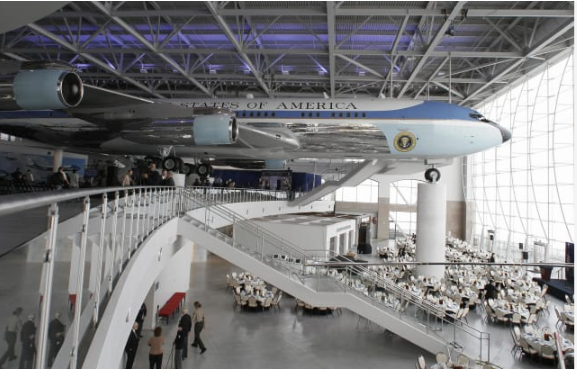
According to Von Hardesty, there are no fixed rules regarding the implementation of Air Force One’s design, so anything can happen. “I love the current design.
But perhaps the President’s motivation is that the aircraft should reflect more explicitly a sense of American patriotism, and red, white and blue, of course, are synonyms of that. If the president wants to review and possibly change the livery, there is no historical precedent that stands in the way of him doing so,” he said.
But he added, “I hope they will pull something off that’s pleasing and acceptable to everyone. I just hope it doesn’t become some ugly debate.”










